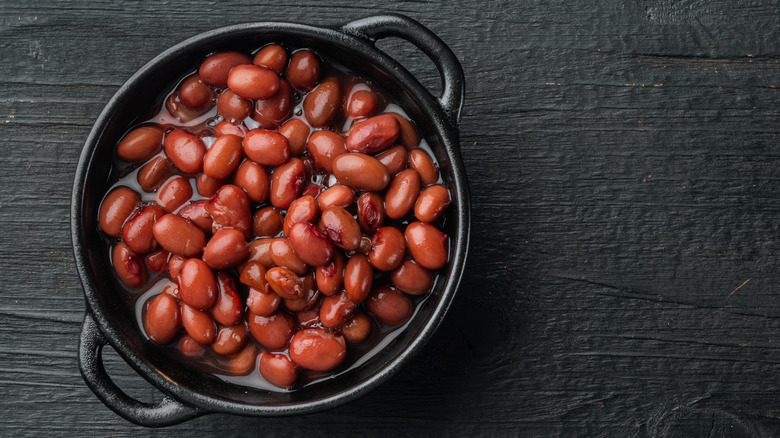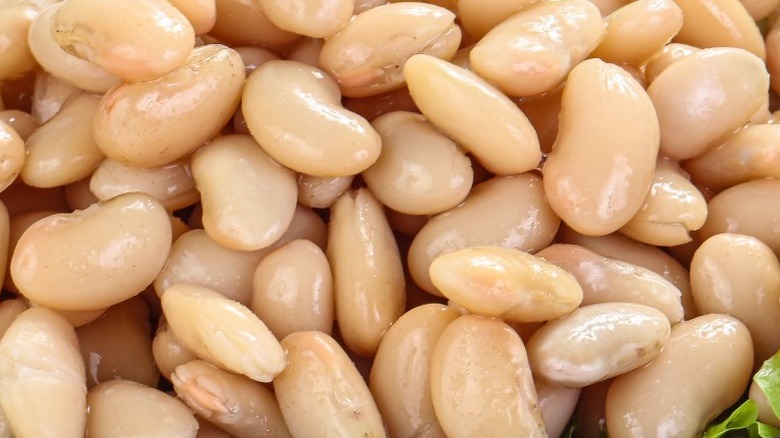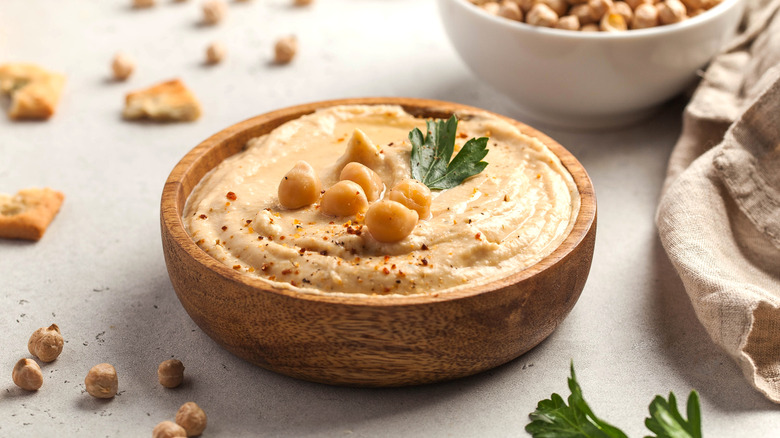Why You Should Always Rinse Canned Beans
Beans are a go-to pantry item, providing a quick and easy way to bulk up meals while infusing your diet with valuable fiber, vitamins, and minerals (per Healthline). From lentils to chickpeas, kidney beans, or black beans, these plants from the Fabaceae family commonly appear in the canned-food section of your grocery store. Though instant use is a primary incentive for choosing canned beans over dried, there's one important step you should take to insure your recipe is a success: rinsing your beans.
Many cooks overlook (or rush past) the simple but consequential step of draining and rinsing canned beans before using them, but that can be a big mistake. You probably know it's important to rinse off and pat dry your canned beans when roasting them, as Epicurious says it helps achieve that crunchy delight you're looking for. But there are two more reasons to rinse canned beans before using them in all your kitchen creations.
Why it's desirable to rinse canned beans
The thick, cloudy liquid surrounding your favorite canned beans is edible, but that doesn't necessarily mean it's tasty or healthy. That's because the two major components in the liquid are salt and starch. Martha Stewart explains that the canning process involves mixing blanched beans with water, salt, and additives, which help preserve them and retain color and composition. But the mixture contains significant amounts of salt, which will impact the flavor of your dish and raise your daily sodium intake without providing much in exchange.
Healthline states that one cup of canned black beans typically contains 27% of the recommended daily values for salt, and that excess sodium has been known to cause high blood pressure in certain individuals. The outlet concurs that the simple act of rinsing your canned beans before using them will cut down on that excess salt.
The starch in the canned bean solution has its own implications in your cooking. It can alter the texture, composition, and liquid ratios of the recipe you are creating. However, Bon Appétit shares it does have some useful qualities and can be saved for certain edible applications.
When to save the liquid from canned beans
It's easy to toss the discarded liquid from your can of beans into the sink, but there are a few scenarios in which you might want to save that starchy concoction. America's Test Kitchen explains the liquid found in canned chickpeas is known as aquafaba, which is useful in vegan cooking. It's a popular replacement for eggs and is useful for thickening foods or creating fluffy textures such as meringues and macarons.
Before discarding any of the liquid from your canned beans, consider the dish you are creating. Bon Appétit suggests the ingredient is an easy way to fix too-thin dishes. Just put a small amount aside before draining the can and have it on hand to add to sauces, soups or stews, or a casserole as needed. The liquid can also be used to make hummus creamier or give re-fried beans a better consistency.
One important thing to note: since the canned-bean liquid will have a different composition according to the manufacturer or type of bean, you'll want to taste it before dousing your soon-to-be lunch or dinner.


